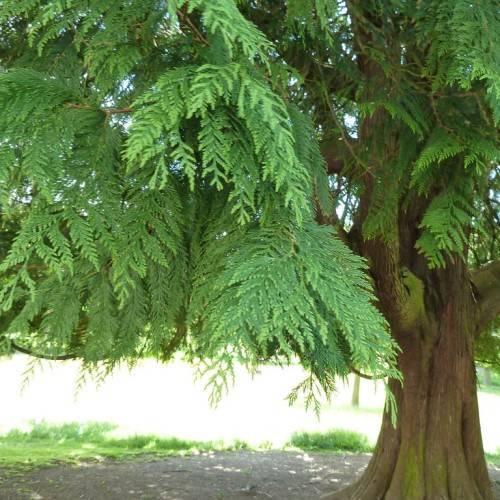
hiba
Thujopsis dolobrata
Cycle:
Perennial
Watering:
Average
Hardiness Zone:
5 - 7
Flowers:
Flowers
Sun:
Full sun,part shade
Cones:
Yes
Leaf:
Yes
Growth Rate:
Low
Maintenance:
Moderate
Salt Tolerant:
Yes
Care Level:
Medium
watering
Hiba (Thujopsis dolobrata) is a slow-growing evergreen plant that prefers cool climates and does not require much water. During periods with average temperature, the plant should be watered weekly, ensuring that the soil stays evenly moist but not wet. During the warmer months, you may want to water the plant more often, about every 3 or 4 days. Hiba should not be watered excessively as this can cause root rot and other issues. During winter, when the temperatures are colder, water the plant less often, every 2 to 3 weeks. It is important to check the soil’s moisture levels every few days to determine if it needs to be watered. If the topsoil feels dry, then the plant needs to be watered.
sunlight
Hibas (Thujopsis dolabrata) prefer to grow in areas of bright light, but generally do best when provided with some shade throughout the day as well. In order to keep the Hibas happy and healthy, they should receive anywhere between 4-6 hours of direct sunlight each day, preferably during the morning or early afternoon, when the sun is not too hot. They also need to be given some sunlight in the evening to ensure they do not become spindly or leggy. Generally, the more sunlight your Hibas receives each day, the more lush and full it will look with its beautiful foliage.
pruning
Hiba (Thujopsis dolobrata) should be pruned minimally, only when necessary. Prune hiba in late winter or early spring, just before the new growth begins. Since hiba is a slow-growing conifer, only minor pruning is necessary to remove any dead or damaged branches. If crown reduction is necessary, reduce the size of the canopy by removing 1 or 2 branch tips on longer branches only if the tree appears overgrown. No more than 1-third of the canopy should be removed at any 1 time. Avoid heavy pruning, as this may disfigure the canopy, leaving few green needles. After pruning the hiba, fertilize the soil around the base of the tree to provide good nutrition.
